Common Types of Lawn Disease in Georgia
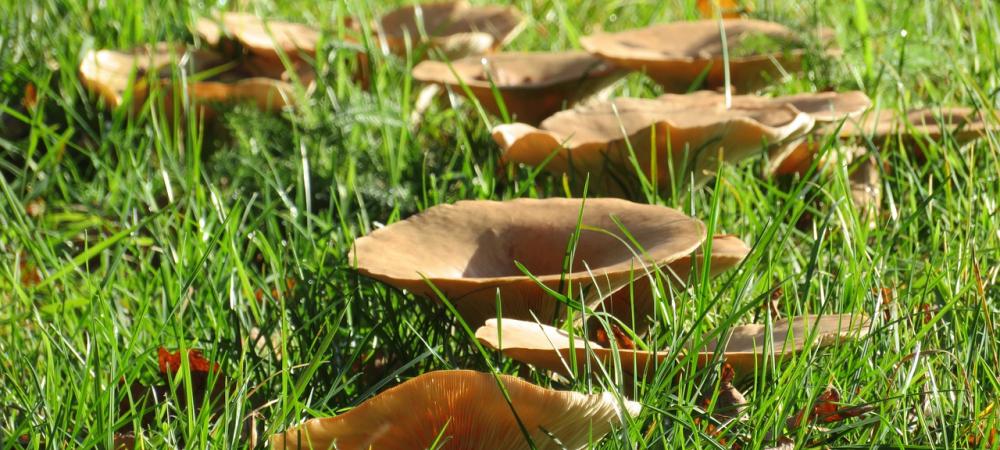
There are many different diseases than can impact your turf. Learn more about these common lawn diseases below.
Large Patch/Zoysia Patch
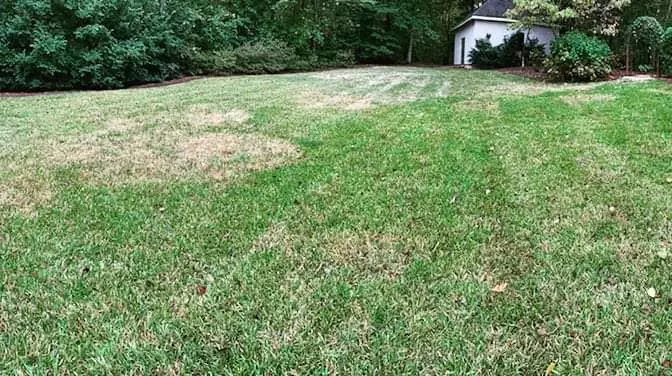
Large patch occurs during the spring and fall, when warm-season turfgrasses are entering or exiting their period of winter dormancy. Circular patches of diseased turf are observed, ranging in diameter from less than 3 ft. up to 25 ft. Leaves of recently infected turf, located at the periphery of the patch, may appear orange in color. Some patches may be perennial, recurring in the same location and expanding in diameter year after year. In contrast to brown patch, large patch infection of warm-season grasses occurs on the leaf sheaths, where water-soaked, reddish-brown or black lesions are observed. Foliar dieback from the leaf tip toward the base occurs as a direct result of these leaf sheath infections. This disease can be quite active at cool temperatures on warm season grasses in the spring and fall. Large patch is favored by high relative humidity as well as temperatures of over 80°F during the day and over 55°F at night.
How To Get Rid of Large Patch Lawn Disease
- Use low to moderate amounts of nitrogen, moderate amounts of phosphorous and moderate to high amounts of potash.
- Avoid nitrogen applications when the disease is active.
- Increase the height of cut.
- Increase the air circulation.
- Minimize the amount of shade.
- Irrigate turf early in the day.
- Improve the drainage of the turf.
- Reduce thatch.
- Apply lime if soil pH is less than 6.5
- Remove dew from turf early in the day.
- Fungicides are available to control the disease.
Grey Leaf Spot
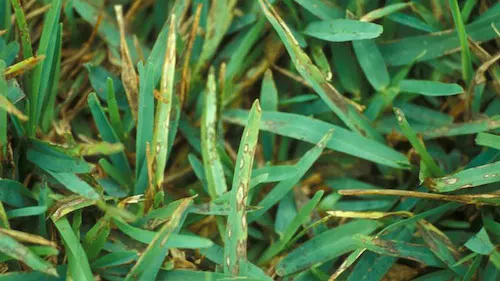
The symptoms of gray leaf spot vary depending on the grass cultivar. On St. Augustine grass, gray leaf spot first appears as small, brown spots on the leaves and stems. The spots quickly enlarge to approximately ¼ inch in length and become bluish-gray in color and oval or elongated in shape. The mature lesions are tan to gray in color and have depressed centers with irregular margins that are purple to brown in color. A yellow border on the lesions can also occur. Gray leaf spot is favored by daytime temperatures between 80°F to 90°F and night temperatures above 65°F. It is also found in areas with high nitrogen levels and that are stressed by various factors, including drought and soil compaction. This disease is most severe during extended hot, rainy and humid periods.
How To Get Rid of Grey Leaf Spot Lawn Disease
- Avoid medium to high nitrogen levels during mid-summer.
- Irrigate turf deeply and as infrequently as possible to avoid water stress.
- Allow water to remain on leaves for only a short period of time.
- Reduce thatch by vertical cutting.
- Make sure mower blades are sharp.
- When possible, plant turfgrass that is resistant to gray leaf spot.
- Fungicides are available to control the disease.
Leaf Spot/Melting out
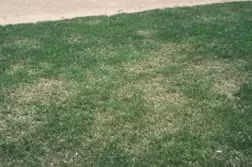
Leaf spot symptoms include purplish-brown to black spots with tan centers on the leaf blade and sheath. The lower leaves of the infected plants become shriveled and blighted. Severe leaf spot can lead to melting-out when leaves and tillers are infected, causing severe thinning of the stand. Disease occurs at temperatures between 40°F and 80°F in areas that experience more than 10 hours a day of foliar wetness for several consecutive days. The disease is favored by high amounts of nitrogen, a low mowing height, and even dull mower blades. Tips listed below are ways to reduce/control this disease.
How To Get Rid of Leaf Spot Lawn Disease
- Reduce turf stress by using lightweight equipment.
- Increase air circulation to speed turf’s drying process.
- Do not apply high rates of water-soluble nitrogen in the spring.
- Minimize the amount of shade.
- Irrigate turf deeply and as infrequently as possible.
- Reduce thatch in the early spring and in the summer for warm-season turfgrass.
- Fungicides are available to control the disease.
Take-All Root-Rot
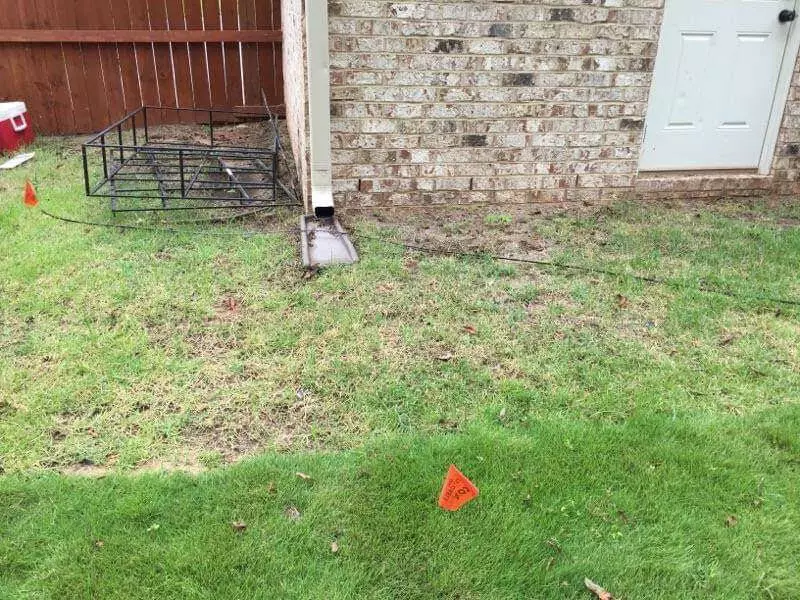
Take-all patch causes wilted, circular patches that are brown or bronze-colored and measure up to several feet in diameter. Infected plants have dark-brown roots. Take-all root rot typically occurs in wet conditions and in areas with a high soil pH — most severe at pH 6.5 or above. This disease is more severe on less fertile and sandy soils.
How To Get Rid of Take-All Root-Rot Lawn Disease
- Use acidifying fertilizers.
- Apply moderate to high levels of phosphorous, potash and minor elements where these nutrients are depleted from the soil.
- Improve the drainage of the turf.
- Reduce thatch.
- Fungicides are available to control the disease.
Dollar Spot
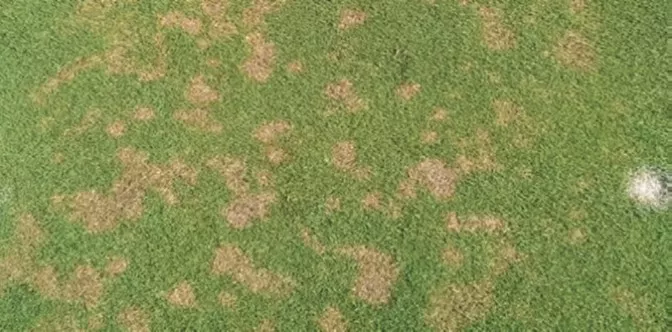
Symptoms of dollar spot included sunken, circular patches that measure up to several inches on turfgrass. The patches turn from brown to straw color and may eventually coalesce, forming irregularly shaped areas. Infected leaves may display small lesions that turn from yellow-green to straw color with a reddish-brown border. The lesions can extend the full width of the leaf. Multiple lesions may occur on a single leaf blade. Dollar spot is favored by temperatures between 60°F to 85°F and continuous high humidity. This disease is particularly favored by warm days, cool nights, and intense dews. When the disease is severe, it also infects turf growing in areas with low levels of nitrogen and in dry soils.
How To Get Rid of Dollar Spot Lawn Disease
- Use an adequate level of nitrogen, particularly in the spring and early summer.
- Mow grass at regular intervals.
- Reduce thatch.
- Increase the air circulation.
- Irrigate turf deeply and as infrequently as possible to avoid drought stress.
- Avoid frequent and shallow irrigation schedules.
- Remove dew from the turf early in the day.
- Fungicides are available to control the disease.
Slime Mold
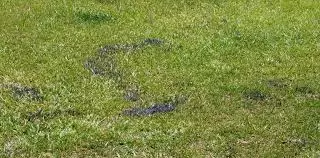
Large numbers of pinhead-sized fruiting bodies may suddenly appear on grass blades and stems in circular to irregular patches 1-30 inches in diameter. Affected patches of grass do not normally die or turn yellow and signs of the fungi usually disappear within 1 to 2 weeks. These fungi normally reproduce in the same location each year. The fungi are not parasitic, but they may shade the individual grass leaves to the extent that leaves may be weakened by inefficient photosynthesis. Large numbers of pinhead-sized fruiting bodies may suddenly appear on grass blades and stems in circular to irregular patches 1-30 inches in diameter. Affected patches of grass do not normally die or turn yellow and signs of the fungi usually disappear within 1 to 2 weeks. These fungi normally reproduce in the same location each year. The fungi are not parasitic, but they may shade the individual grass leaves to the extent that leaves may be weakened by inefficient photosynthesis.
How To Get Rid of Slime Mold Lawn Disease
You can remove slime mold by mowing the turf, using gardening tools, or a high-pressure stream of water.
Mushrooms
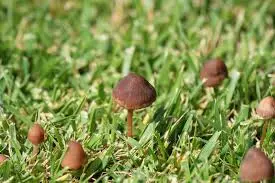
Mushrooms are the above-ground fruiting bodies of fungi that live in the soil. These fungi feed on decaying organic matter, such as old roots, stumps and thatch. When these fungi are present in your lawn, toadstools, mushrooms or puffballs of various shapes and sizes will seem to sprout up overnight after wet weather. Mushrooms do not damage the lawn, but fairy ring fungi can become a problem. Mushrooms will disappear on their own when the weather becomes dry or turns colder. Although the mushroom fruiting bodies will no longer be evident in your yard, the fungal growth will slow and remain unseen until the environmental conditions are right again for growth.
How To Get Rid of Lawn Mushrooms
There are no known fungicides that will prevent or control mushroom fungi.
Fairy Ring
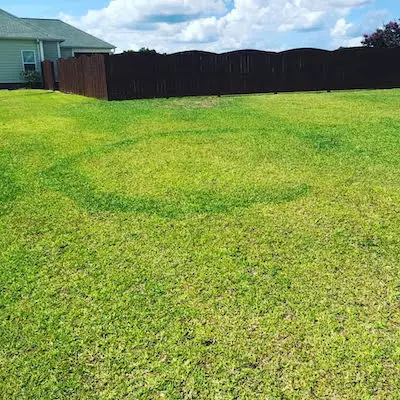
Fairy ring symptoms vary with causal agents. Above-ground mushroom and puff ball basidiocarps may or may not occur. Typically, this disease has outer rings that are either dark green or brown in color. The shape and size of the rings vary depending on the species. Activity in the turf ceases when the individual rings come in contact with each other. Some causal agents form fruiting bodies, but do not form rings. Conversely, other causal agents will form rings, but not fruiting bodies. Fairy rings are sometimes responsible for causing hydrophobic areas similar to localized dry spots. Oftentimes, severely infected areas have to be replanted and recovery is very rare.
How To Get Rid of Fairy Ring Lawn Disease
- Avoid using root zone mixes with high levels of undecomposed organic materials.
- Reduce thatch by vertical cutting.
- Aerate soil.
- Irrigate deeply.
- Use nitrogen fertilizer to mask symptoms on some types of fairy rings.
- Use soil-wetting agents to help penetrate hydrophobic areas.
- Fungicides are available to control the disease but have to be performed often.
Centipede Decline
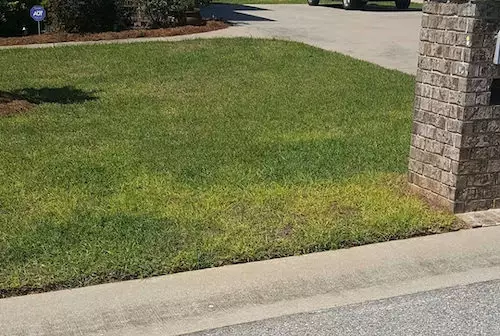
Failure to green-up in the spring or successful green-up followed by decline and death in late spring and summer. Factors that contribute to centipede grass decline include improper plant nutrition, thatch build-up, cultural practices, and soil and water conditions. Many factors may contribute to this problem. It is important to be aware of these factors so that preventive and/or corrective steps can be taken.
How To Get Rid of Centipede Decline
This problem can be prevented by proper management, which includes avoiding over-fertilization, preventing thatch accumulation, irrigating during drought stress (particularly in the fall), and maintaining a mowing height of 1 to 1.5 inches. Fungicides are available for this disease.
Anthracnose
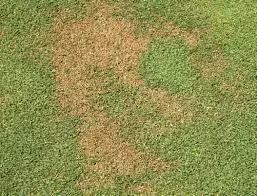
Anthracnose typically infects turfgrass during warm weather. It causes irregularly shaped patches that are yellow to brown in color. Leaf lesions that are yellow with black centers may also occur. Anthracnose also causes a basal stem and leaf sheath rot during cool, wet weather in the spring and warm, moist weather in the summer. Infected shoots are easily detached. Anthracnose is favored by temperatures over 78°F. It occurs in areas that experience more than 10 hours a day of leaf wetness for several consecutive days. Soil compaction and low amounts of nitrogen fertility may enhance the severity of this disease.
How To Get Rid of Anthracnose
- Increase the height of cut.
- Minimize stress by using walk-behind mowers.
- Decrease the amount of foot traffic.
- Maintain adequate nitrogen and a balanced fertility level.
- Irrigate the turfgrass just enough to prevent wilting.
- Do not core aerate while disease symptoms are present.
- Make preventive fungicide applications where the disease is a chronic problem.
Lawn Rust
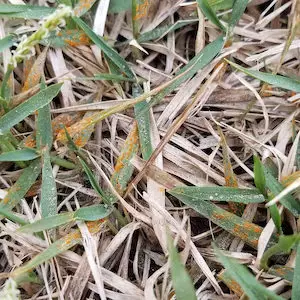
Rust diseases initially cause light-yellow flecks on the leaf blades and sheaths. The flecks enlarge, elongate, and turn yellow in color. The infected areas raise above the epidermis and then rupture, releasing spores that are yellowish-orange to reddish-brown in color. The leaf blade turns yellow starting at the tip and progressing to the base. A severe disease infection can cause the shoot to turn yellowish to reddish-brown in color and slow in growth. As individual plants die, the turf thins. Rust diseases typically occur in early spring through mid-summer, depending on the location of the turf. Rusts favor moist, low-light areas. Depending on the species, rusts favor temperatures between 65°F and 85°F. Severe rust infections occur on slow-growing turfgrass particularly those with low nitrogen levels and/or plant water stress.
How To Get Rid of Lawn Rust
Helpful tips to reduce activity and control infection.
- Apply adequate levels of nitrogen.
- Remove clippings from turf.
- Reduce thatch.
- Reduce shade and improve air circulation.
- Regulate irrigation to minimize the amount of time moisture remains on the leaf surface.
- Water deeply and infrequently.
- Fungicides are available to control the disease.
Call The Professionals For Fungicide Treatments
If you are looking for a reliable lawn care regiment that helps protect your lawn from common turf diseases, Contact Our Team Today!
